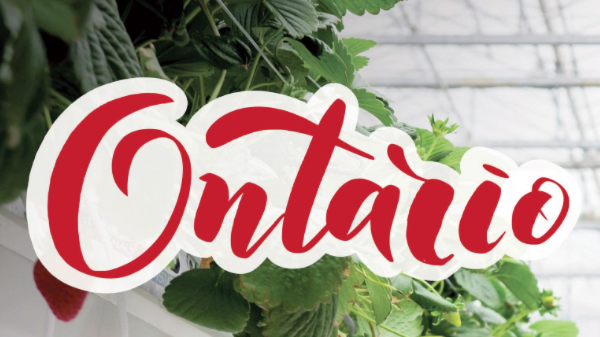Growing and supplying fresh produce is big business in Ontario. As Canada’s top fruit and vegetable producer, the province grows more than 125 different produce crops on 245,000 acres of land.
With an estimated annual farm gate value in excess $2.3 billion, Ontario is responsible for more than a third of Canada’s total fruit and vegetable production, according to the Ontario Fruit & Vegetable Growers’ Association (OFVGA) BB #:162382.
While Ontario has seen fluctuations in field acreage over the last several years, greenhouses are on the upswing as demand grows among retailers and consumers.
“Produce acreage will continue to rise as the population increases and lifestyle choices like veganism and vegetarianism continue to grow,” predicts Michelle Broom, president of the Ontario Produce Marketing Association (OPMA) BB #:162383.
In other words, for Ontario growers and suppliers, business is going up.
Top Crops
To feed a growing, increasingly diverse customer base, Ontario’s growers serve up an assortment of fresh produce—from conventional products like corn, apples, and tomatoes to specialty ethnic items, including Chinese cabbage, callaloo, and Indian eggplant.
According to OFVGA, Ontario’s top fruit crops include apples, grapes, peaches, apricots, blueberries, melons, cherries, nectarines, pears, plums, raspberries, and strawberries. Field-grown potatoes, sweet corn, peas, and tomatoes as well as greenhouse tomatoes, cucumbers, and peppers are the province’s leading vegetables.
“This has remained consistent over the last five years,” Broom said.
In addition to these hot commodities, provincial growers harvest a diversity of vegetables on a smaller scale, from asparagus to zucchini.
According to the Ontario Ministry of Agriculture, sweet corn represented the most acreage, followed by peas. In addition, beets, Brussels sprouts, green onions, radishes, parsnips, and celery all expanded in acreage.
Broom said Ontario growers are experimenting with a few new commodities, particularly sweet potatoes. Researchers are working on specially-adapted sweet potatoes “to give Canadian growers a larger share of the more than $40-million market.”
The program is focused on breeding high-yield early varieties by 2021 for both the fresh and processing markets.
As Ontario’s foodservice industry searches for more unique ingredients to create cultural dishes, Broom said regional growers are expanding their crop lineup to meet these needs.
For instance, some Ontario growers are cultivating Thai chili peppers and cassava root.



